32 top movies that are all-time classics, but flopped at the box office
Not every cinematic classic can also be a commercial hit

The movie business is strange, when you think about it. Before streaming changed everything, movies – the culmination of countless artists pouring metric tons of time, energy, and yes, love – often only got a window of two to three weekends at most to earn all the money it could, if that. It’s a business model inherited from live theater, and many stone-cold classics actually bombed at the box office before finding a longer shelf life on home video and the internet.
Here are 32 classic movies that did poorly in terms of commercial revenue before earning a proper place in the hearts and minds of audiences everywhere.
32. Three Thousand Years of Longing (2022)

Seven years after his Mad Max Fury Road set a new standard for action cinema, director George Miller strove to tell an epic romance between a lonesome British scholar (played by Tilda Swinton) and a handsome genie (Idris Elba). Even at a modest budget of $60 million, Three Thousand Years of Longing struggled in a theatrical market still recovering from the COVID-19 pandemic. Its rare existence as a hypnotic adult fantasy makes it a modern classic destined to eventually find its audience.
31. Under the Skin (2013)

Despite starring mega-famous Marvel heroine Scarlett Johansson, Jonathan Glazer’s distressing sci-fi noir (based on Michel Faber’s 2000 novel) failed to turn a profit on even a minuscule budget of $13 million. Still, Under the Skin was and still is celebrated as a haunting film exploring sexism, class politics, and identity in its story about an alien (Johansson) who preys on men in rainy Scotland. Funny enough, Johansson was barely recognized by locals during filming; in a 2014 interview with Irish Times, Glazer remarked: “I remember seeing her walking along the street in a pink jumper on a long lens and she looks like an exotic insect on the wrong continent.”
30. Crimson Peak (2015)

Guillermo del Toro’s moody gothic romance about an author who moves into a haunted English mansion was promoted as a traditional horror movie, which left anyone looking for screams disappointed. (Competition from hits like The Martian also didn’t help.) But del Toro is an assured visionary whose artistry always finds appreciation in due time. Almost as soon as it was released in autumn 2015, Crimson Peak had feverish proponents dubbing it a “gothic masterpiece” and such sentiments have only grown over time. The movie has since been hailed as among del Toro’s best, even if it’s also one of his biggest commercial flops.
29. Tenet (2020)

Christopher Nolan is one of the few true auteurs of the 21st century, with anything he makes drawing audiences comparable to a franchise sequel. But the COVID-19 pandemic truly tested his status. Budgeted at $200 million and boasting a complex narrative involving time manipulation, Nolan’s sci-fi action film Tenet opened in theaters when staying home was the safest option for most. Even with a total gross of $365 million, Tenet lost money for Warner Bros. But it has found a dedicated following, with the spoken line “Don’t try to understand it, feel it” serving as a rallying cry for its admirers.
29. Ishtar (1987)

Elaine May’s riotous comedy about two numbskull songwriters (played by Dustin Hoffman and Warren Beatty) caught in a geo-political standoff began with very positive test screenings. But bad blood between producers at the highest level was leveraged in the press, leading to negative reviews and inflated marketing costs to outdo bad publicity. Ishtar was not just nuclear-levels of a bomb, but a consequential one that led to Columbia selling off to Sony. After decades of being considered among the worst movies ever, Ishtar has enjoyed reappraisal as a brilliant satire of male narcissism. Its biggest fans include cinematic titans Quentin Tarantino and Martin Scorsese.
Sign up for the Total Film Newsletter
Bringing all the latest movie news, features, and reviews to your inbox
28. The Last Duel (2021)

Ridley Scott is no stranger to great movies losing at the box office; in 2005, his war epic Kingdom of Heaven was sentenced to the guillotine. But in 2021, his medieval drama The Last Duel suffered from a combination of troubling subject matter and theaters still rebounding from the COVID-19 pandemic. (Though Scott blamed millennials and cell phones, for some reason.) Still, Scott’s refined craftsmanship and a prominent cast of Matt Damon, Adam Driver, Jodie Comer, and Ben Affleck make The Last Duel sublime, and a reminder that grown ups can still have movies to themselves.
27. Donnie Darko (2001)
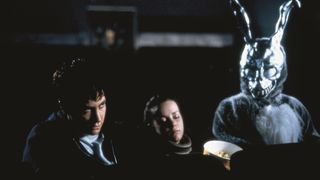
Director Richard Kelly burst onto Hollywood with his debut film Donnie Darko, a psychological horror-thriller teeming with teenage angst. An overwhelmingly bleak tone and a pivotal plot point involving a plane crash made its release in October 2001 very awkward, and are the root causes for a poor box office. But Donnie Darko found a rabid audience on DVD and from internet word of mouth. It kicked off Jake Gyllenhaal’s journey to stardom and made Gary Jules’ somber cover of “Mad World” the anthem for nihilistic 21st century youth.
26. Children of Men (2006)

A haunting dystopian thriller where Clive Owen plays a civil servant aiding a pregnant refugee (Clare-Hope Ashitey), Alfonso Cuarón's Children of Men imagined a plausible future battered by xenophobia and ecocide. Despite its genius and well-deserved accolades, it failed to sell enough tickets. Children of Men grossed only $70.5 million against a then-hefty $76 million production budget, but a recurring place on various best-of lists ensure the movie will continue to alarm audiences about our self-destructive apocalypse until it’s too late.
25. Fear and Loathing in Las Vegas (1998)

Terry Gilliam’s adaptation of Hunter S. Thompson’s 1971 novel/memoir tanked in theaters but lives on as a poster hung in college dorm rooms everywhere. Johnny Depp and Benicio del Toro co-star as a journalist and attorney respectively who make a mess of Las Vegas while high on, well, everything. Gilliam memorably frames the American dream through a funhouse mirror, where capitalist aspirations look grotesque under the hot neon lights of self-determination.
24. Showgirls (1995)

Another look into the perversion of the American dream, Paul Verhoeven’s Showgirls – starring sitcom queen Elizabeth Berkley stripping away her wholesome image – has long maintained its reputation as a prodigious failure. It also endured quite the takedown from critics, who were uncertain how to register its abundant sexuality and surface-level misogyny. But time has been kind to Showgirls, with modern critics and filmmakers like Jim Jarmusch and Adam McKay recognizing it as a cunning satire that takes camp seriously. In a 2015 interview, Verhoeven lamented how much Berkely shouldered the movie’s overwhelming negativity.
23. John Carter (2012)
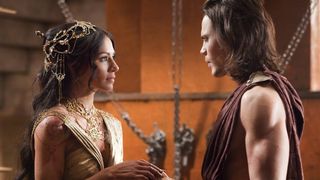
In the same year The Avengers and The Dark Knight Rises caught the world in a vice grip, Andrew Stanton’s big budget sci-fi John Carter (based on the 100-year-old Edgar Rice Burroughs novel) flopped big time and failed to give Disney a new franchise. But amidst years of same-old superhero movies, critics and audiences have reevaluated John Carter as an overlooked classic that actually deserved a franchise and was cursed by timing. Both its lead stars, Taylor Kitsch and Lily Collins, have since remarked how John Carter is the movie they’re still recognized from. “I will die, and people will still be seeing this movie,” Collins said in 2022.
22. Steve Jobs (2015)

Framed at specific points in his life, this biographical drama about the late Apple founder enjoyed acclaim even when its total gross of $34.4 million barely equals the newest iPhone’s quarterly sales. Still, Steve Jobs is enthralling thanks to a dynamite script by maestro Aaron Sorkin, a chameleonic Michael Fassbender, and sharp direction by Danny Boyle who unearths all the suspense and tension in the plainest of fluorescent-lit backstage hallways. In retrospect, Steve Jobs shows what it means to make a biopic that is anything but a hagiography.
21. Mulholland Drive (2001)

Beautiful as it is baffling, David Lynch’s beloved Los Angeles noir — which started as a TV pilot – failed to break even. But with phantasmagoric storytelling incompatible to mainstream tastes, is anyone surprised? A surrealist descent into the shattered dreams of Hollywood, Mulholland Drive stars Naomi Watts as an aspiring actress who meets an amnesiac, played by Laura Harring. Occupying the crossroads between Sunset Boulevard and Damien Chazelle’s Babylon, its bleak tone resonates to those trying to bask in the silver screen.
20. Office Space (1999)

As the MTV generation matured into adulthood, their frustrations towards the oppressive mundanity of the workplace found a voice in Mike Judge’s endlessly quotable and memeable black comedy. Budgeted at just $10 million and grossing a little over $12 million, Office Space didn’t set Hollywood’s TPS reports on fire. But constant replay on Comedy Central inspired many to wish they could also take out their anger on their boss’ printing machine.
19. Bottle Rocket (1996)

This celebrated mid-'90s comedy about inept criminals launched the careers of Wes Anderson and both Wilson brothers (Luke and Owen). But the movie’s abysmal box office — foreshadowed by poor test screenings — means it’s a miracle anyone has careers at all. (Owen Wilson has said he nearly quit acting to join the Marines after its disastrous release.) Today, Bottle Rocket enjoys retroactive praise as Anderson’s most unusual masterwork.
18. Serenity (2005)

The cult sci-fi series Firefly, often regarded as one of the best TV shows canceled too soon, enjoyed unlikely good fortune when it got a big budget sequel movie in 2005. Despite a passionate fanbase, the disinterest of regular moviegoers unfamiliar with Firefly doomed Serenity to peak just at number two in its opening weekend. But Serenity still won rave reviews and recognition as one of the best sci-fi movies of all time. Its legacy was further sealed when (now-disgraced) director and creator Joss Whedon helmed one of the biggest movies ever: Marvel’s The Avengers in 2012. You just can’t stop the signal.
17. The King of Comedy (1982)

Even Martin Scorsese has withstood bombs in his illustrious career, none more so than The King of Comedy. Robert De Niro plays a delusional aspiring comedian who cooks up a scheme to kidnap his idol, a late-night TV host, and blackmail the network into giving him a spot. Like Scorsese’s other collaboration with De Niro, their legendary 1976 noir Taxi Driver, the ending of The King of Comedy is up for debate. But no matter one’s interpretation, there is no denying that Scorsese’s treatise on the cult of fame – alarmingly prescient of online influencers’ ascendancy – is hypnotic, dark, and nothing to laugh at.
16. The Master (2012)

Paul Thomas Anderson’s star-studded psychological drama is about a World War II veteran (played by Joaquin Phoenix) who succumbs to the influence of a paternal cult leader. Despite its reverence as a smart, searing portrait of teacher-student dynamics and American masculinity, not to mention parallels to Scientology, The Master couldn’t dominate ticket sales and underperformed. Still, The Master occupies a special place in PTA’s filmography, and proof that the late Philip Seymour Hoffman had no equal.
15. Idiocracy (2005)
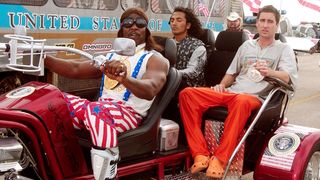
Best described as a thinking movie for the frat guy, Mike Judge’s sci-fi comedy stars Luke Wilson as a librarian who wakes up 500 years in the future and finds civilization has collapsed under the weight of anti-intellectualism. While Idiocracy bombed under Bush Jr.’s presidency, it resurged during Trump, with discomforting parallels between the former reality TV star and the movie’s buffoonish President Dwayne Elizondo Mountain Dew Herbert Camacho (Terry Crews).
14. Scott Pilgrim vs. The World (2010)
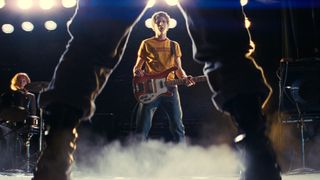
Between installments of his genre-bending Cornetto Trilogy, Edgar Wright harnessed the energy of his audience – pop culture-obsessed millennials in the mist of their first real romantic relationships – in his kinetic and frenzied Scott Pilgrim vs. The World. A colorful rendition of the graphic novels by Bryan Lee O’Malley, Michael Cera leads a cast of future all-stars (Mary Elizabeth Winstead, Anna Kendrick, Aubrey Plaza, Chris Evans, and Brie Larson among them) as a bass-playing slacker who deals with his new girlfriend’s unusual baggage: her seven evil exes. Scott Pilgrim couldn’t outmuscle its box office rival The Expendables, but those who saw it in August 2010 knew the cult classic it was destined to be.
13. Clue (1985)
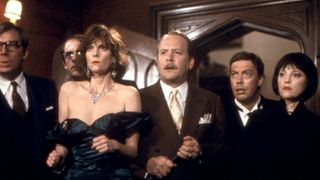
Being a high-concept adaptation of the popular board game, Jonathan Lyne’s Clue didn’t exactly kill it at the box office when it opened in December 1985. But when Clue reached TV and home video, audiences – and specifically millennials – fell in love with its irreverent humor (“Flames, on the side of my face!”) and novel multiple endings. Today, it is now a favorite at midnight screenings everywhere. Speaking of midnight screenings…
12. The Rocky Horror Picture Show (1975)

I saw you shiver with antici…pation, for this one. In Jim Sharman’s musical horror comedy, a newly engaged couple (Susan Sarandon and Barry Bostwick) take shelter in a castle owned by the mad scientist Dr. Frank N. Furter (Tim Curry in an unforgettable performance). Bad reviews and poorly attended early screenings in August 1975 nearly doomed The Rocky Horror Picture Show to the dumps, and in fact a New York City premiere on Halloween night was canceled. But the film found a second life in midnight screenings, and now you can always do the time warp again. Its lively energy invites audiences to come in costume and sing and dance, making Rocky Horror the definitive movie for the witching hour.
11. Brazil (1985)

Terry Gilliam has endured the pain of box office bombs more than once, like with The Adventures of Baron Munchausen in 1988 and The Zero Theorem in 2013. But no movie of his is both a celebrated classic and a financial failure like his 1985 sci-fi comedy Brazil. An absurdist exploration into the bowels of bureaucracy and unfettered capitalism, Brazil failed to gross enough to make up its $15 million budget in its original theatrical run. But it’s now regarded as one of the greatest British movies of all time, and its influence is felt in modern franchises like Star Wars: The Last Jedi and the Marvel series Loki.
10. The Iron Giant (1999)

In Brad Bird’s moving throwback to Silver Age science fiction, a boy befriends a giant alien robot (voiced by Vin Diesel) in this tale about identity, purpose, and peace in the face of war. (“What if a gun had a soul, and didn’t want to be a gun?” was the idea Bird pitched to Warner Bros.) Through-the-roof test screenings and rave reviews shocked the studio, which didn’t have a proper advertising campaign in place before its release in April 1999. It was only on home video, pay-per-view, and 24-hour holiday broadcasts on Cartoon Network that made The Iron Giant a colossal classic.
9. Blade Runner (1982)

Based on a Philip K. Dick novel, Ridley Scott’s wildly influential sci-fi noir about a bounty hunter of humanoid robots – a “Blade Runner,” played by a hard-boiled Harrison Ford – failed to electrify the box office due to stiff competition in E.T the Extra-Terrestrial, Conan the Barbarian, and Star Trek II: The Wrath of Khan. But its outsized influence is inescapable today, with references to it found across other movies, comic books, and video games. Though Blade Runner is universally beloved, it's a franchise whose commercial prospects always seem to be lost in time, like tears in the rain.
8. Blade Runner 2049 (2017)

Just like its predecessor, Blade Runner 2049 from Denis Villeneuve is ambitious, bold, provocative, and still didn’t create oceans of money for the studio. Still, the acclaimed sequel flips the script as it follows K (Ryan Gosling), an artificial “Replicant” and Blade Runner who questions if he might be human. Co-starring Harrison Ford, Ana de Armas, Robin Wright, Mackenzie Davis, Jared Leto, and Dave Bautista wearing the tiniest glasses you’ve ever seen on someone’s face, Blade Runner 2049 is what all sequels should ironically strive to be: original.
7. Speed Racer (2008)
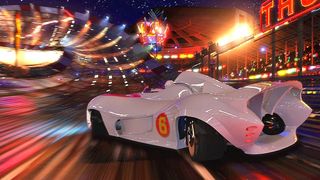
Coming off their revolutionary but divisive Matrix trilogy, the Wachowskis entered artistic singularity when the directors took on adapting the iconic Japanese anime Speed Racer into live-action. Emile Hirsch stars as a superstar race car driver who seeks to outrun the competition while staying loyal to his family’s garage. Speed Racer revs up the screen with its total onslaught to the senses, which made audiences delirious over its befuddling sur-reality. In the years since, Speed Racer has won over cinephiles who now deem it to be a vastly underrated and misunderstood masterpiece.
6. The Shawshank Redemption (1994)

It’s hard to imagine now, when it’s the favorite of dads and uncles everywhere, but Frank Darabont’s The Shawshank Redemption, based on the Stephen King novella, was not a commercial hit. Despite plentiful Oscar nominations and recognition as one of the greatest movies of the 1990s, few actually saw it when it opened in September 1994. (True story: Darabont and producer Liz Glotzer went to its opening weekend at the Cinerama Dome in L.A., and found themselves the only ones there.) A bleak tone, a mouthful of a title, competition from Pulp Fiction and Forrest Gump, and a trend towards action movies are cited as reasons for its low box office. But now, The Shawshank Redemption is hailed as the industry’s gold standard and the kind of work everyone in Hollywood strives to leave behind.
5. Fight Club (1999)
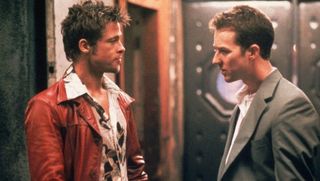
Dudes everywhere see themselves in Edward Norton and Brad Pitt, who co-star in David Fincher’s profoundly influential, artistically innovative, and witty psychological drama. Based on the Chuck Palahniuk novel, Fight Club is transgressive in its portrait of modern male isolation. But in spite of its constant presence in film school classrooms, Fight Club failed to knock out the box office due to confused marketing; some of the strategy included advertising with the World Wrestling Federation, which Fincher objected to. Was it an art film? Was it a dark action movie? No movie marketing executive could pin down Fight Club, but after its release, all anyone can talk about is Fight Club.
4. Willy Wonka & the Chocolate Factory (1971)
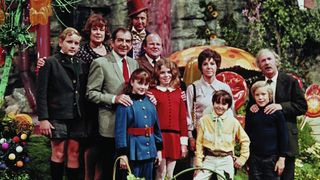
Endless broadcasts on TV and its many memes make it easy to believe that Willy Wonka & the Chocolate Factory was always a hit. But when it opened in 1971, Mel Stuart’s film version of Roald Dahl’s novel barely took a bite of the box office and underperformed, grossing $4 million. (Even by 1971 standards, Willy Wonka was just the 24th highest grossing film that year.) The movie was so unpopular that Paramount declined to renew its distribution years later and sold it to Warner Bros. It was only then, long after it was released, that Willy Wonka finally found an audience hungry for its sugary charms and salted scares. (What is up with the boat scene?)
3. It’s a Wonderful Life (1946)

One of the greatest and most loved Christmas films of all time hardly gave its producers yuletide cheer when the movie, directed by Frank Capra and starring James Stewart, fell over half a million short of its break-even point when it released in January 1947. (Awesome timing.) So, how did It’s a Wonderful Life become a cultural institution? In short, a clerical error in 1974 caused the movie to enter public domain, meaning it got super cheap to air on TV. Networks took advantage and played it every holiday throughout the 1980s, which is when George Bailey’s existential crisis grew into a seasonal tradition for families everywhere.
2. Citizen Kane (1941)
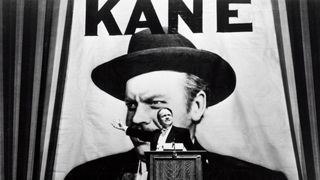
Long thought to be the greatest movie of all time, Orson Welles’ tragic drama about the rise and fall of a newspaper mogul (in the spirit of real-life figures Hearst and Pulitzer) impressed critics but failed to make back its budget during its initial release. It was a decade later through re-appraisal by the French film press that resurrected Citizen Kane into public consciousness. Even now, the movie remains an enduring artistic achievement thanks to Welles’ still-mesmerizing direction and his bullish performance as Charles Foster Kane, a titan of industry whose unfulfilled wish is to just be happy like when he was a kid.
1. The Wizard of Oz (1939)

Yes. Really. An undisputed classic that inspired multiple generations of artists and audiences, Victor Fleming’s The Wizard of Oz, memorably starring Judy Garland, didn’t have an easy Yellow Brick Road to the Emerald City. Its original run grossed a solid $3 million – approximately $66 million today, adjusted for inflation – but high production costs meant this was not profitable for MGM. (Observed Garland in her autobiography: “Fantasy is always a risk at the box office.”) A re-release in 1949 revived the public’s awareness of the film, and numerous TV broadcasts from the 1950s onward allowed The Wizard of Oz to finally find its place over the rainbow.

Eric Francisco is a freelance entertainment journalist and graduate of Rutgers University. If a movie or TV show has superheroes, spaceships, kung fu, or John Cena, he's your guy to make sense of it. A former senior writer at Inverse, his byline has also appeared at Vulture, The Daily Beast, Observer, and The Mary Sue. You can find him screaming at Devils hockey games or dodging enemy fire in Call of Duty: Warzone.

Superman is the hero 2025 needs, and Justice League writer Mark Waid knows why: "There is a sense of dread that is an undercurrent to every moment of our lives," and "Superman is always the symbol of hope"

Sicario star leads Wes Anderson's new movie in weird and wonderful new trailer










